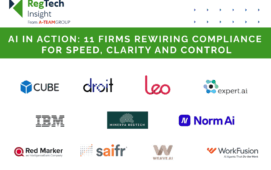The Financial Conduct Authority’s (FCA) publication of its final policy statement on the implementation of Markets in Financial Instruments Directive II (MiFID II) early this week underlines the mantra of ensuring transparency around processes and the protection of client money. It clarifies issues around provisions including inducements in relation to research, best execution and taping, but also raises further questions on some of these issues and begs the question of whether the UK regulator will add more nuances, and how much more clarification it will provide ahead of the MiFID II compliance deadline on 3 January 2018.
Many of the statements in the FCA’s final policy extend coverage of, and amend, the regulation’s provisions. Inducements in relation to research, by way of example, will apply to collective portfolio managers and not only to investment firms subject to MiFID II. The FCA has also amended its guidance on how quickly research charges should be passed to research payment account administrators, changing the timing from the trade date, an impossible achievement in a T+2 settlement environment, to a more reasonable 30 days, although this timing has drawn criticism for failing to create a monthly payment process.
David Pearson, head of post-trade at Fidessa, says the FCA policy statement reiterates the importance of unbundling research payments by investment managers and notes that many firms that previously did not have separate research procurement processes and acquired research through broker relationships, are making good progress on unbundling and using the opportunity to decipher what research they really need and what can be cut.
But for some firms, the caveat here is whether existing order management systems (OMS) can support unbundling, or whether additional technology needs to be implemented.
Pearson explains: “If budget making and management is complex, firms will need to look at their OMS software and decide whether it can support research budgets and payments, or whether they need to look to other suppliers such as Commcise for a solution.”
The complete unbundled solution needs to be transparent, suggesting that legacy OMS users may need new technology, along with those with complex requirements. Here, Pearson comments: “Integration of new systems with legacy OMS can be a problem, particularly with upstream applications such as trading systems.”
On best execution, the FCA states: “We will not, contrary to the proposals we consulted on, apply the changes in the best execution rules in MiFID II to Alternative Investment Fund Managers (AIFMs).” On taping, it states: “We will not apply a requirement for recording phone conversations and electronic communication to all investment services and activities carried out in relation to corporate finance business. We will, as proposed, remove the current partial exemption in our taping rules for discretionary investment managers, albeit making some modifications to the way the rule applies. We have also decided that where Article 3 firms [exempted from the regulation by local regulators] decide to take a note rather than record a telephone conversation we expect the note to include key details of any orders taken and the key substance of the main points of the conversation.”
The policy statement also describes areas of MiFID II where the FCA has gone beyond what the legislation requires, a notion that is unlikely to find favour among firms already struggling to meet the compliance deadline.
Perhaps answering the question of ‘are we nearly there yet’, Phil Lynch, head of markets, products and strategy at SIX Financial Information, says: “This final guidance from the FCA suggests that the UK regulator may yet add further nuances, which will add additional complexity to MiFID II rules for European financial institutions. The UK would not be alone, as other local authorities are also establishing local definitions.
“Take the target market assessment of product governance – which is the beating heart of investor protection. The complex/non-complex classification product governance rules are already challenging under the minimum ESMA requirements. To carry this out in-country, with all the different nuances, takes this challenge to another level for financial firms in terms of needing to consider classifications at even further levels of granularity. The issue is local variations of the rules create a higher level of complexity, especially for firms dealing across jurisdictions.
“The industry needs to find a way to develop standardised approaches that can be shared, automated and scaled to a higher degree. Only then will firms be able to interact together using the same information.”
Subscribe to our newsletter




